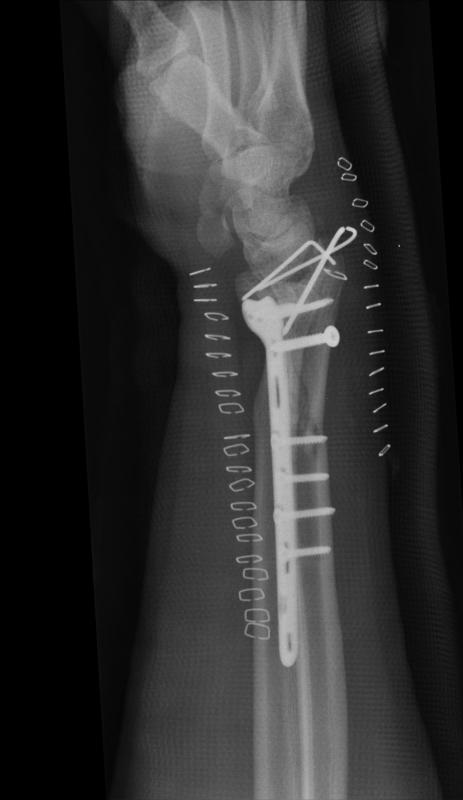At WiseGEEK, we're committed to delivering accurate, trustworthy information. Our expert-authored content is rigorously fact-checked and sourced from credible authorities. Discover how we uphold the highest standards in providing you with reliable knowledge.
What Is an Intramedullary Rod?
An intramedullary rod is a long metal rod that a surgeon inserts into a bone’s medullary canal, or the hollow cavity in the center of a bone. The intramedullary rod helps hold together bones with factures or other damage, as it spans beyond both extremes of the bone’s damage. It might stay in a patient indefinitely, unless the rod’s presence later causes the patient pain or discomfort.
The materials used to manufacture intramedullary rods have changed over time. Stainless steel has proven to be compatible with most people’s physiologies, not causing tissue irritation like some other metals. Still, stainless steel can make a limb with an intramedullary rod significantly heavier, depending on the size of the rod. More recently, titanium has become a popular alternative, since it not only does not cause irritation, but intramedullary rods made of titanium also weigh a fraction of similar sized stainless steel rods.

Not all intramedullary rods have the same configuration. The first versions of intramedullary rods had a cross section with a “V” shape, but the majority of rods now have a shape that resembles clovers. Specialized rods have square or circular shapes and might have either a solid or hollow core, which enables the rod to flex with the movements of the body.
Other hardware might be used in conjunction with an intramedullary rod. To ensure the rods do not move inside a bone, a surgeon might lock them in place by attaching bolts to both ends or by inserting pins or screws into pre-drilled holes in the rods, anchoring the rods in place. The pins or screws sit below the surface of the skin, obscured from view. Attaching the rods to a bone, whether through the use of bolts or screws, provides not only reinforcement against lateral forces acting on a bone, but also against rotational and compression forces. Anchoring intramedullary rods provides extra protection against further injury to a bone while the healing process takes its full course.
The first physician to use an intramedullary rod on a patient was Gerhard Kuntscher in 1939. Kuntscher first implanted rods in soldiers’ bones during World War II. Originally, intramedullary rods were used on patients who had fractured femurs. Before the use of metal rods, physicians used various mechanical devices to straighten broken bones, and then plaster to hold the bones and surrounding tissue stationary so the bone tissue could then mend.
AS FEATURED ON:
AS FEATURED ON:











Discuss this Article
Post your comments